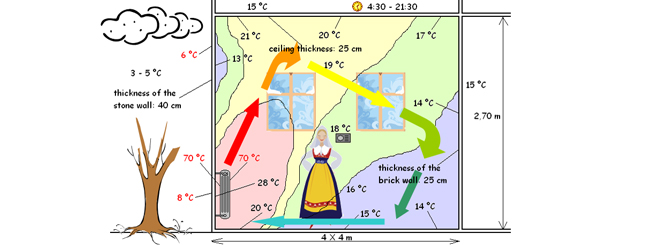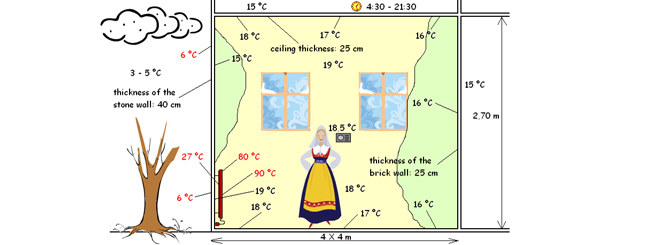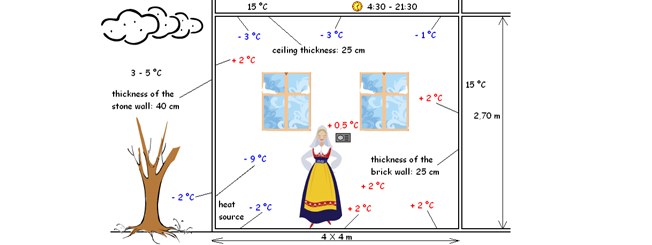Radiation heating or convection heating?
It has been scientifically proven: the human body absorbs heat better in the form of far infrared rays of a type far from visible light, as happens with solar heat (not incandescent or halogen stoves!) providing benefits and comfort. This form of infrared heating is based on irradiation. This is different than heat transmitted by convection, which creates ring circulation where hot rises and cold air falls. Unlike a convection, or worse, a forced-air system:
Unlike a convection, or worse, a forced-air system:
· Thermojoy energy efficient heater does not dry out your throat: it does not require humidifiers;
· The radiation heating moves a lot less dust, which blackens walls and ceilings near heating elements, with benefits for both cleanliness and health;
· Thermojoy electricity saving heater heats more uniformly with benefits especially for the elderly, infants and those who perform sedentary activities where the centre of gravity of one's body is in an area where the temperature is, on average, lower than that set on the thermostat;
· The infrared heating heats objects more and the air less; this phenomenon allows reducing the temperature setting and creates an environment that is less favourable to the reproduction of bacteria - there's no point in heating the air directly: those who sunbathe in the mountains don't feel cold, even though undressed, because their bodies are heated directly by the sun;
· Eliminating convective motion reduces the possibility of condensation and mould on the walls;
· Unlike a convection, or worse, a forced-air system, there is less vertical and horizontal stratification of the heat;
· Comfort no longer depends on your position in the room: with traditional heating, in the evening after dinner, while you're digesting your food and tired, you sit down and enter a lower temperature band;
· Reducing stratification limits the "heat bridge" effect: heat lost through the floor lapped by the warm air.
Diagrams of the temperatures measured in the two systems being compared

The graphic shows how a temperature setting of 18 °C in a convection heating system is not very comfortable due to the lack of homogeneity of the temperatures (vertical and horizontal stratification). In this case, between face and feet, the body is at an average temperature of (18 °C + 15 °C)/2 = 16.5 °C. As shown in the graphic, the measurements were taken on a cloudy winter day with an outside temperature oscillating between 3 and 5 °C and a heating period from 4:30 to 21:30 in a test room with surface area of 16 m².

This graphic shows the preceding situation but, this time, managed with Thermojoy wall heater and setting the thermostat at 18.5 °C: one-and-a-half degrees less than the temperature generally considered comfortable of 20 °C. In this case, between face and feet, the body is at an average temperature of (18.5 °C + 17 °C)/2 = 18 °C, the same temperature as a convective system set at 20 °C: (20 °C + 16 °C)/2 = 18 °C.

The graphic still shows the same room but, this time, emphasising the temperature differences between a convection and infrared heating system: the result is the recovery of the wasted heat that rises and its redistribution lower where people live.

